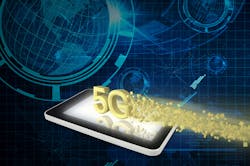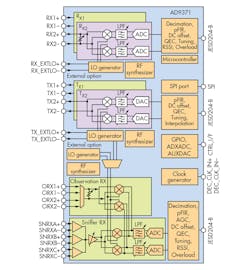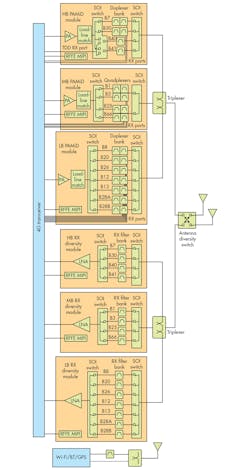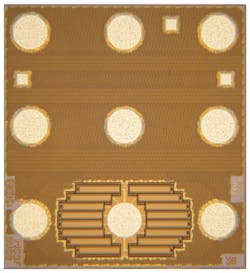Download the PDF of this article.
We have been waiting for 5G for years now and everyone is wondering about its ETA. But there is no one ETA. The launch and rollout of 5G is going to be like other cellular standards, gradual over a period of years rather than all at once. Some trials are going on now and we could see an early pre-standard system in 2018 whereas a widespread deployment is still not expected until 2020 as predicted. Here is a summary and update on this enigmatic technology that is expected to enhance our lives.
The 5G Rationale
The question about need always arises when speaking of 5G. Why are we going to so much trouble to develop this over-the-top system? The basic answer is “because we can.” That’s engineering for you, developing stuff just because we have the means and knowledge and want the intellectual challenge. We can figure out why we want it later. But do we really need it? Probably not right now, but there are some justifications.
The first rationale is always the need for speed. We can never really get enough downlink speed, it seems, thanks to the constantly rising access to video of all types. More over-the-top (OTT) 4K movies are on the way, without buffering in 5G. Video eats up speed like nothing else so let’s have it. Second, new applications are expected to stress the capabilities of the current 4G systems. The Internet of Things (IoT) and machine-to-machine (M2M) applications are growing fast and millions of connected devices will be using the cellular system for communications. Current systems probably cannot handle the expected load, therefore the eventual need for greater subscriber capacity.
Self-driving vehicles and the safety requirements of the Advanced Driver Assistance Systems (ADAS) program may also use cellular as part of the vehicle-to-vehicle (V2V) and vehicle-to-infrastructure (V2I) communications that make driving safer. Such systems are not here yet, but will represent a major load when implemented.
While data rate is always a major consideration, another factor has emerged as critical to driving safety as well as many IoT/M2M uses in factory automation. That is the issue of latency, the delay time between when an action signal is initiated and the time the action is carried out. Many robotic and other machine actions require millisecond (ms) range latency for competent operation. Current 4G radios can usually achieve 25 ms or more latency that is just not good enough. The goal with 5G is a latency of 1 ms or less. That is expected but not fully confirmed.
Finally, most cellular network operators are always looking for new ways to squeeze more profit out of their network investments. 5G offers that opportunity.
Technology Update
The Third Generation Partnership Project (3GPP) is the organization developing the 5G standards. That standard is now officially named New Radio (NR). NR is to 5G as LTE is to 4G. In case you have not been following the 5G NR movement, here are the highlights of this overly complex radio and networking technology.
- 5G is expected to use mostly new spectrum, although some systems will use bands below 6 GHz. Most of the usual bands in the 700 MHz to 2.6 GHz range are full but some operators are expected to build some 5G systems in this range as their spectrum holdings permit. The FCC also opened up 150 MHz of spectrum in the 3.5 GHz band called the Citizens Broadband Radio Service (CBRS). This is shared spectrum but some may use it for 5G. Otherwise most 5G systems will be implemented in the millimeter wave (mmwave) bands. In the U.S. the 27-28 and 37-40 GHz bands are available with most operators implementing systems in the 28 GHz band. These frequencies offer the bandwidth to achieve the promised data rates.
- Data rates are expected to top 1 Gb/s with a peak of 10 Gb/s depending upon the bandwidth allotted and signal path environment. Ordinary data rates for mobile will be hundreds of megabits per second.
- Carrier aggregation (CA) will be used to piece together different segments of spectrum into a unit to support the desired higher data rate. CA bands can be contiguous or non-contiguous; even unlicensed spectrum can be aggregated.
- Modulation is expected to be some variation of OFDM. Multiple schemes have been under investigation and some carriers have decided on their favorite. Waveforms under consideration are FBMC (filter-bank multicarrier), f-ODFM (filtered-OFDM), GFDM (generalized frequency division multiplex), and UFMC (universal filtered multicarrier). For example, Verizon has selected standard CP-OFDM (CP=cyclic prefix) used now with 75 kHz subcarrier spacing. The final standard has not been announced.
- Increased use of time division duplexing (TDD). Most LTE is frequency division duplex (FDD) and uses separate spectrum segments for up and down links. 5G may use it as well. However, by using TDD only half the spectrum is needed.
- Small cells are expected to form the primary 5G network. Small cells the size of a shoe box can be bolted to light poles and the sides of buildings rather than require separate towers. Some will be indoors. Called HetNet densification, this topology uses many small cells to cover a given area because of the short range of mmwave signals. A key issue is getting permission from municipalities and companies to attach the cells to the various structures. The FCC is trying to ease and facilitate this need.
- Backhaul will be fiber where it is possible to lay it, otherwise mmwave backhaul will use the 70 to 80 GHz bands. Some front haul, links between cells, is also expected.
- Massive MIMO is also an essential feature to be implemented. Massive MIMO, usually meaning more than 64 antenna systems, can serve multiple users and provide beamforming. MIMO is a key technical feature of 5G as it provides the multiuser service as well as the higher data rates.
- Increased sectorization with beamforming provides spatial multiplex capability and enables frequency reuse. Adaptive beamforming boosts signal power and lets small cells avoid interference and initiate more reliable links.
- Software-defined network (SDN) and network function virtualization (NFV) will form the basis for the 5G network. While beyond the scope of this article, these software technologies will manage the small-cell network, dynamically reconfigure the network of small cells, and provide faster, easier implementation of new subscribers.
Applications
The new applications of automotive and IoT/M2M have already been mentioned. In addition, 5G will also implement the usual cellular uses of texting, email, and internet access. But no voice. Voice service will be via older 3G systems or by way of 4G voice over LTE (VoLTE) where implemented. Mobile service will be faster than ever.
A new application is broadband connectivity. Some rural areas still do not have a fast internet connection via cable or DSL. A 5G high-speed internet connection is possible and could be one of the first 5G services to be implemented. A 5G wireless link will finally provide the speeds at home and office that metropolitan area user expect and are accustomed to.
What About LTE?
So what happens to the current 4G LTE system? It will carry on and continue to be upgraded and supported. LTE or long-term evolution has been around since about 2009 and has grown significantly to today it is the mainstream cellular network in most of the developed world. It is fast and reliable. And many carriers have yet to implement upgrades to LTE-Advanced and LTE-Advanced Pro that put into service higher data rates and other features. LTE-A according to the International Telecommunications Union (ITU) is the real 4G.
LTE-Advanced implemented carrier aggregation that accommodates up to five 20 MHz carriers for a total of 100 MHz bandwidth that supports downlink rates to 150 Mb/s. LTE-A also added 256QAM modulation for a further boost in data rate. LTE-Advanced Pro goes further, allowing up to 32 carriers to be aggregated for even greater bandwidth and adding 4x4 MIMO permitting 1 Gb/s LTE.
Another feature of the LTE-A Pro update is the use of unlicensed spectrum to further increase bandwidth. Advanced Pro accommodates Licensed Assisted Access (LAA) and LTE-WLAN (LWA) that stitches together LTE spectrum and unlicensed 5 GHz spectrum used with Wi-Fi 802.11ac/ax. To minimize interference to Wi-Fi connections, a listen-before-talk feature is implemented. Another similar technology called LTE-U for unlicensed is also available to expand transmission bandwidth using the 5 GHz band and boost downlink speed.
LTE-A Pro provides for IoT/M2M connectivity with new versions that use less bandwidth for lower speeds and power savings. LTE-M uses only 1.4 MHz of bandwidth to achieve speeds up to 1 Mb/s. An ever more frugal version called NB-IoT uses only one OFDM resource block of 180 kHz to achieve a data rate to 250 kb/s. These new versions are expected in many current IoT applications and in vehicle-to-everything (V2X) applications like ADAS and self-driving cars.
LTE Advanced also offered up several other variations. An interesting feature is device-to-device (D2D) communications that lets LTE handset owners talk directly to one another rather than through a cell site. This allows LTE handsets to be used like two-way radios with the usual push-to-talk (PTT) capability. D2D handsets use something called Proximity Services (ProSe) to discover one another and implement a link with or without assist from a nearby cell site. This feature was added as an incentive to public safety organizations to use LTE networks over other digital radio technologies like P25 and TETRA.
The LTE-A Pro version also implements LTE Broadcast. LTE-B is the use of LTE for video broadcasting. It uses channels in the 470 to 694 MHz UHF band. When implemented, it will provide video broadcasting to support the growing OTT video content vendors.
LTE is entrenched. It is not going away even when 5G comes along. ABI Research projects that high-speed downlink LTE-Advanced Pro subscribers will reach 641 million in 2021. ABI further says that 50% of the global population will be able to connect to a 4G LTE network by 2022. ABI also reports that it expects more than15 mobile operators will be offering Gigabit LTE to subscribers by the end of 2017. We will just have to make do with LTE until 5G arrives.
The Design Challenges of 5G
4G LTE systems are complex but 5G adds much more complexity in the basestations and handsets. Early prototypes have used FPGA designs that can be revised as needed for testing purposes. Test-equipment vendors have provided considerable hardware and software to make R&D possible. Once the standards have been completed the semiconductor companies can make 5G chips. Already both Qualcomm and Intel have announced 5G modems. The Qualcomm modem X50 is based upon its Snapdragon processors and supports 5G NR sub-6GHz and mmwave bands as well as gigabit LTE. The Intel modem, nicknamed “Goldridge” (Fig. 1) also covers the 5G NR sub-6GHz and mmwave bands as well as 4G LTE.
Intel’s 5G modem Supports coverage in the sub- 6GHz and 28 GHz mmwave bands and manages 2x2 and 4x4 MIMO configurations. (Courtesy of Intel)
Another useful 5G chip is Analog Devices' AD9371, a dual RF transceiver that targets basestations, small cells, and backhaul units (Fig. 2). In addition to the dual receivers and transceivers, the chip also integrates ADCs, frequency synthesizers, and related DSP. The tunable range is 300 MHz to 6 GHz. This device should be one good solution to implementing large-scale MIMO systems.
Analog Devices AD9371 transceiver is the kind of IC needed to build 5G equipment. (Courtesy of Analog Devices)
Single-chip modems and transceivers are great but the real design problem is the radio frequency front-end (RFFE). The RFFE is that section of a cell phone that includes the antennas, LNAs, filters, switches, and PAs. Figure 3 shows a typical RFFE for a 4G phone as an example. The complexity comes from the need to cover multiple bands. This means many filters for each band on both the transmitters and receivers. The usual arrangement is to divide the RFFE into sections for low bands (698-960 MHz), mid-band (1710-2200 MHz), and high-band (2400-3800 MHz). 5G would add another section. And let’s not forget the circuitry and antennas for Wi-Fi, Bluetooth, and GPS. Filters are usually surface acoustic wave (SAW) or bulk acoustic wave (BAW) types. Good filters are essential to minimize cross talk and intermodulation distortion. The new phones will still cover the needed LTE bands but also new mmwave 5G band’s filters along with the related LNAs and PAs. Multiplex switches will be more complex. A different type of filter will be needed for the mmwave bands.
This is a current, state-of-the-art RF front-end architecture of a 4G smartphone showing filters, switches, and amplifiers. (Courtesy of Resonant)
Filter company Resonant has developed a design tool that can produce structures that outperform traditional designs. As for the antenna arrangements, they will be complicated by the MIMO configurations and/or the use of phased arrays for beamforming. Eventually some of the circuitry will be fully integrated to save space.
Others addressing the RFFE problem are Cavendish Kinetics and Qorvo. Cavendish offers a line of RF MEMS switches and antenna tuners. The antenna tuners are selectable switched capacitors for tuning antennas over a wide range (Fig. 4). This minimizes the number of antennas needed. The MEMS switches have very low loss, a quality needed for so much band switching. The whole rationale for an antenna tuner is to improve antenna efficiency. For electrically small antennas, efficiency is directly related to antenna volume and inversely related to operational bandwidth.
Bottom view of the Cavendish Kinetics MEMS switched capacitor antenna tuner.
Qorvo covers the whole RFFE with GaN PAs, LNAs, and switches. Their QPB9318 and QPB9319 are highly integrated dual-channel switch-LNA modules that support frequency bands below 5G. These modules pair with the QPA2705 GaN PA to provide a complete massive MIMO RF solution.
Research firm Yole Developpement of Lyon, France, says that 4G and 5G are changing the front-end industry. They project that the RFFE business will grow from $10.1 billion in 2016 to $22.7 billion in 2022.
The 5G Debut While Waiting on 6G
So when will we see some actual 5G? It will come gradually in stages. The Third Generation Partnership Project (3GPP), the organization developing 5G, agreed to complete one part of the standard by March 2018. This is earlier than initially agreed upon, but it will give all parties a head start in building chips and workable systems. Some operators have said that they will use their existing 4G LTE network along with the new 5G physical layer for initial operation. The remaining standards will come along in 2019 with final ITU blessing in 2020. Both AT&T and Verizon have pre-standard test networks in place now and could offer limited early service in 2018. Some carriers have indicated they will initially use their 5G capability for wireless broadband for rural areas and as a competition with cable, DSL, and fiber ISPs. Residents of remote and underserved areas will really appreciate the gesture.
So far there has been little word about the phones themselves. No doubt they are under development but are hampered by the lack of final standards as well as chips.
So shouldn’t we start thinking about 6G? Some researchers are probably already working on the options. Will it be in the 100 GHz+ spectrum or optical-based? Or satellite? My guess is that 6G is probably going to be more evolutionary than revolutionary as the technology may not be there yet. Think 2030 time frame. In the meantime, enjoy your 4G LTE and brace for 5G.
About the Author

Lou Frenzel
Technical Contributing Editor
Lou Frenzel is a Contributing Technology Editor for Electronic Design Magazine where he writes articles and the blog Communique and other online material on the wireless, networking, and communications sectors. Lou interviews executives and engineers, attends conferences, and researches multiple areas. Lou has been writing in some capacity for ED since 2000.
Lou has 25+ years experience in the electronics industry as an engineer and manager. He has held VP level positions with Heathkit, McGraw Hill, and has 9 years of college teaching experience. Lou holds a bachelor’s degree from the University of Houston and a master’s degree from the University of Maryland. He is author of 28 books on computer and electronic subjects and lives in Bulverde, TX with his wife Joan. His website is www.loufrenzel.com.






